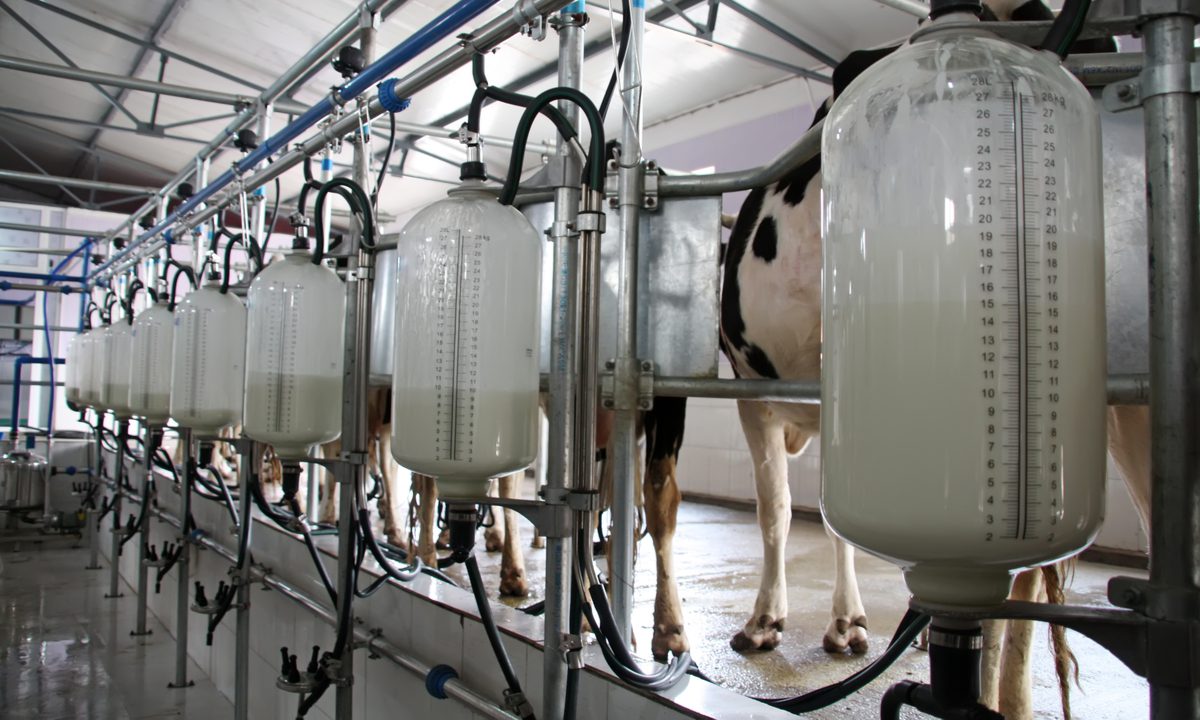Dairy Industry Uses Data to Speed Delivery of Perishable Products

The dairy industry faces the same global supply chain problems as any other industry. In addition, it’s producing and moving a product that is perishable.
Despite the short window of time that the industry players have to get milk from a farm to a plant, many are still using pen-and-paper and legacy systems.
“I’m at a dairy conference today in Syracuse, New York, meeting different dairy cooperatives, and the problems that we hear are all the same — it’s really just, there’s still a lot of pen and paper and a lot of paper milk tickets going around the dairy industry,” Robert Forsythe, CEO and co-founder of Milk Moovement, told PYMNTS.
To offer the industry an alternative, Forsythe and Jon King, chief product officer and co-founder, started building the cloud-based dairy supply chain software company in 2018. Today, through its shared database, Milk Moovement helps dairy farmers and distribution partners track and route shipments in real time and access information about the quantity and quality of the milk being shipped.
On Tuesday (July 12), the company announced it has raised $20 million in a Series A round to help accelerate product development and adoption of the technology platform in North America.
“There’s really five key players that have to work together every hour of the day for dairy: it’s your producer, your hauler, your lab, your cooperative and your processing plant,” Forsythe said. “All of them need the data to understand what’s actually happening in their region at any time.”
Streamlining the Supply Chain
Since the company’s beginning, the dairy cooperatives have been Milk Moovement’s main clients and have brought their supply chain onto the platform. They’ve told those who want to haul their milk that they must use both the platform and the driver app, and they’ve told those who want to test their milk that they must put their lab results in the system.
“The dairy cooperatives are the ones who really want the entire supply chain working out of this,” Forsythe said. “It’s easier for them — less hours of data entry and less chance the supply chain will go wrong.”
More recently, however, as other dairy industry players have experienced this digital transformation, they’ve wanted solutions for their own data as well.
“They’re asking, ‘Can we get a processor version of this system? Because we’ve got a ton of data we would like to get access to as well,’” Forsythe said. “It’s really just the frictionless access to data that everyone else is asking to get involved in.”
Making Improvements Based on Data
For example, at the farm level, the producer gets paid based on the quality of their milk. If the lab is late getting the quality results to the cooperative, the milk may have already shipped. If the results show that the milk had lower protein than the cooperative thought, the cooperative would like to have known earlier so that it could make changes to fix that problem before more milk got shipped.
“We don’t create new data — the data’s out there — but it’s getting it in their hands faster so that they can make improvements,” Forsythe said.
Another example of the use of data has to do with truck tracking. The cooperatives ship milk to plants, and the plants can get backed up. The cooperatives don’t learn this until they get calls from their drivers saying they’re stuck at the plant and there’s 10 trucks ahead of them.
“If they had known that, they may have sent that truck to a different plant,” Forsythe said. “So, by seeing where all the drivers are in their state through Milk Moovement, they can already start to find clusters of trucks building up around the processing plant and then redirect trucks to different plants as needed to avoid that.”
Generating Data for Invoicing, Payments
Better access to data also facilitates invoicing and payments. Milk Moovement doesn’t handle the payments — though that is on its agenda — but it collects quantity information from drivers and quality information from labs, which is the information needed for invoicing and payments. Today, users take that information and put it into their payroll system or accounting system.
“The cooperatives can go in and generate the amount that they need to invoice their clients on a 14-day cycle — their clients being these plants that they’re selling milk to — and then they can actually run their pay statements for all their producer farms as well,” Forsythe said. “We kind of become their system of record for what’s moved around their supply chain in 14 days.”
Building Solutions
With the new Series A funding, Milk Moovement aims to accelerate product development by moving from having one large engineering team building things for the site as a whole to having a separate team for each value stream, such as logistics and transportation, processing and payments.
The company is posting jobs to its careers page and expects to grow from 55 people across Canada and the U.S. today to 75 or 80 by the end of this year.
“We’re trying to just really let people be experts in their space and truly understand the problems that these individual cooperatives have — and then build solutions,” Forsythe said.